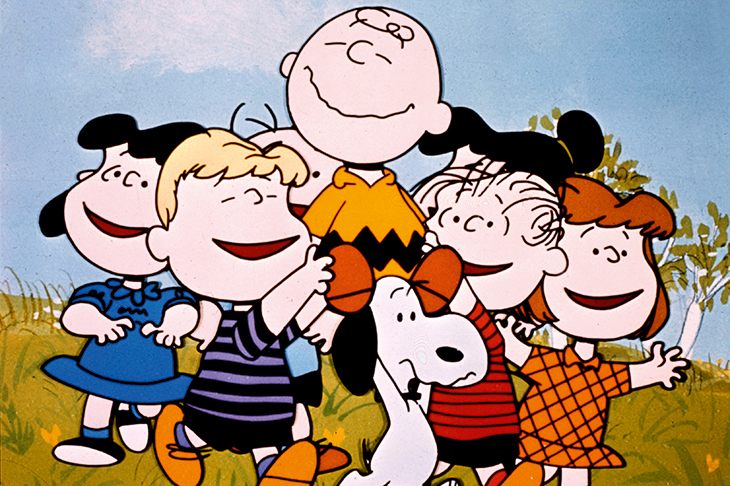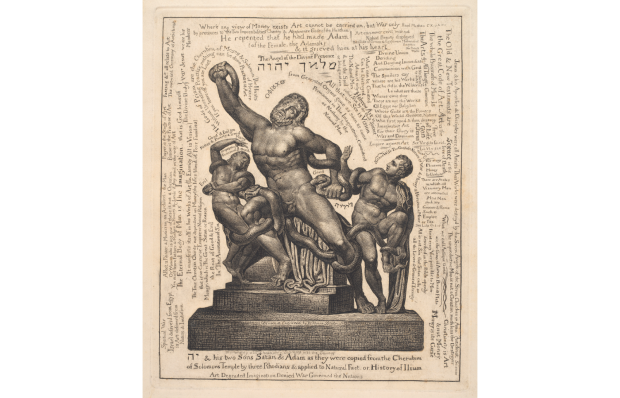For the hundredth, possibly the thousandth, time, Lucy van Pelt offers to hold the football for Charlie Brown so he can kick it. She cajoles him with the innocence of her eyes.
He falls for it; he falls for it every time. Lucy, as she always does, whips the ball away. Charlie loops into the air and crashes to the ground.
‘What you have learned here today, Charlie Brown,’ she explains, ‘will be of immeasurable value to you for many years to come.’
Lucy is a cynic, a sadist, a huckster, a realist. Nevertheless, she would be right but for the fact that nothing is ever of ‘immeasurable value’ to Charlie Brown. He is too battered by life to be an idealist but he clings to hope, to the possibility that there is justice somewhere in the cosmos. He finds none but he is a good man, though only eight years old.
That, in a nutshell, is what Charles M. Schulz’s comic strip Peanuts is all about — the persistence of hope in the face of hopelessness. The strip ran in newspapers and on television from 1950 to 13 February 2000, the day after Schulz died.
It was — and remains — the greatest of all comic strips. Exquisitely drawn, beautifully written, timelessly true, it tenderly distils the absurdity and pain of the human condition. It is about children but it evades easy sentimentality by making the characters struggle with and suffer about childish things that are obviously adult things in disguise. You couldn’t pat Charlie Brown on the head and tell him not to worry, because he had already glimpsed the truth that, for good men like him, life is worry.
And now Peanuts has earned a big exhibition — Good Grief, Charlie Brown! — at Somerset House. I am ambivalent about this, as I shall explain later.
Schulz’s childhood in Minnesota seemed to leave him obsessively modest about his looks and his intellect and with the conviction that he must never be ‘big-headed’. He was, in short, Charlie Brown, even though Charlie, like all the Peanuts gang, had an enormous, non-metaphorical head. Perhaps that was a kind of revenge.
He started out religious but his faith faded with age. In Peanuts there is a godlike character called the Great Pumpkin who, obviously, never actually appears even though the faith of Linus, Lucy’s younger brother, is for ever undimmed. In his teens — at an age Charlie Brown never attained — Schulz discovered he could draw. A little later he went into the army and discovered, as he puts it, ‘all I needed to know about loneliness’. He seems to have been a sensitive, unpretentious though complex man who found an outlet for his personality in the supremely unpretentious form of the comic strip.
In fact, I said he was Charlie Brown, but it may be more accurate to say that he dispersed his personality throughout the entire Peanuts cast. Most poignantly there is Linus, forever clutching his security blanket, Schroeder playing Beethoven on his toy piano, Pig-Pen with his magical capacity to become covered in dust just by getting up in the morning and, most importantly, there is Snoopy, Charlie’s dog.
Snoopy is a beagle; he looks nothing like one but Schulz found the letter ‘b’ funny. He is the strip’s resident genius. He lives in a world of fantasy — he imagines himself a first world war fighter pilot — and he engages in non-human discourse with a bird called Woodstock. He gets angry. In a fit of rage, he tries to part Linus from his security blanket. Linus wins and delivers a superb political insight: ‘Security, like liberty, has to be won and rewon many times.’ Snoopy also shows a touch of pretension in his search for meaning, but when Charlie Brown brings his food bowl, he finds it there.
The problem I have with this exhibition is that Schulz’s genius was, like the art he practised, feather-light. He gave Schroeder Beethoven because he was Mozart. Like most good artists, he didn’t explain or conceptualise his insights. In fact, it may be that, consciously, he had none; his truths emerge naturally from his observations and his art.
Big exhibitions, however, demand heavy, literal exposition and we get far too much of it here. There are dreary, solemn conceptualist installations and a lot of verbal prodding that reaches a climax with the information that the strip shows ‘how we struggle to create meaning in a universe where no meaning is evident — the classic theory of existentialism’. Good grief, Somerset House!
The writer is attempting to elevate Peanuts into some higher realm called philosophy. This is perverse; comparing the strip to existentialism is an insult. Charlie Brown is a bigger figure than Jean-Paul Sartre and Lucy van Pelt would have made mincemeat of Simone de Beauvoir. Art floats, it needs no wordy life jacket.
Furthermore, the postwar art of Andy Warhol, Roy Lichtenstein, Keith Haring and many others embraced pop imagery and comic strips because they saw how effortlessly they delivered significant form. Peanuts led the way and Schulz is up there with the best and brightest. We know all that; there is no need for disguised apologies about how this is only a comic strip.
But, other than that, it is a show worth seeing because, if you avoid the installations and the worst of the verbiage, it does convey the dancing lightness of the art. Peanuts, for all the suffering, is an idyll, a little paradise where nothing makes sense but everything fits. And around Christmas time it is worth being reminded of the imperishable wisdom of Linus: ‘Each year, the Great Pumpkin rises out of the pumpkin patch that he thinks is the most sincere.’ And rise, one day, he will.
Got something to add? Join the discussion and comment below.
Get 10 issues for just $10
Subscribe to The Spectator Australia today for the next 10 magazine issues, plus full online access, for just $10.
You might disagree with half of it, but you’ll enjoy reading all of it. Try your first month for free, then just $2 a week for the remainder of your first year.














Comments
Don't miss out
Join the conversation with other Spectator Australia readers. Subscribe to leave a comment.
SUBSCRIBEAlready a subscriber? Log in